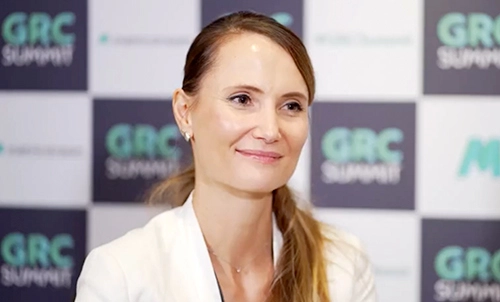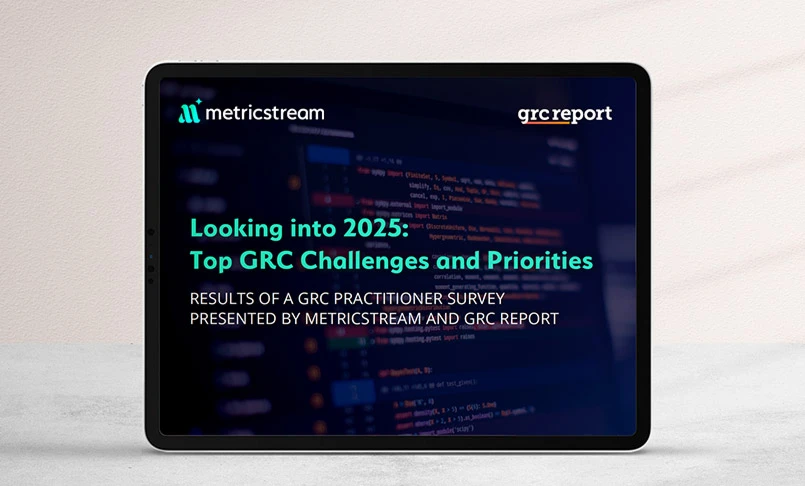Introduction
Risk doesn't just boil down to the magnitude of an impact- it’s also about how fast it can catch up with you. Some risks unfold gradually, giving businesses time to respond, while others strike with little warning, leaving no room for delay. Understanding this dynamic is very crucial for organizations aiming to build resilience, as the speed at which a risk materializes can often be as critical as the risk itself.
This is where the concept of risk velocity becomes a game-changer, helping decision-makers prioritize and prepare for threats that demand rapid responses.
Key Takeaways
- Risk velocity highlights how quickly a risk materializes and disrupts an organization, emphasizing the importance of timing in risk management.
- Factors Influencing Risk Velocity: Key factors include industry dynamics, the nature of the risk, geographic location, technological infrastructure, organizational preparedness, and supply chain complexity.
- Importance of Risk Velocity: Understanding risk velocity enables organizations to prioritize urgent risks, adapt to fast-changing environments, build stakeholder confidence, and improve risk monitoring systems.
- Evaluating Risk Velocity: Methods include analyzing the time to exploit vulnerabilities, qualitative and quantitative scoring, market disruption analysis, scenario planning, and real-time monitoring tools.
- Applying Risk Velocity to Audit Assessments: Incorporate risk velocity into audits to prioritize high-velocity risks, address cascading effects, adjust audit frequency, enhance dynamic scoring, focus on emerging risks, and strengthen team collaboration.
What is Risk Velocity?
Risk velocity refers to how quickly a risk event materializes and begins affecting an organization. It highlights how quickly disruptions can occur once a threat emerges, focusing on the immediacy of response. Unlike risk likelihood or impact, velocity focuses on timing—critical for planning fast, effective mitigation strategies.
What Factors Influence Risk Velocity?
Risk velocity is influenced by industry type, risk nature, geography, tech infrastructure, preparedness, and supply chain complexity. Fast-paced industries, acute risks, and interconnected systems often lead to quicker impacts, while gradual risks, robust frameworks, and simpler supply chains allow for slower escalation.
Below are some key factors that determine risk velocity:
- Industry Dynamics Certain industries experience faster risk velocities due to their inherent nature. For instance, in sectors like technology or financial services, cyberattacks can escalate in seconds, while industries like manufacturing may face slower-evolving risks like supply chain disruptions.
- Type of Risk The nature of the risk itself dictates its velocity. Acute risks like data breaches or system outages can have immediate repercussions, whereas risks like regulatory non-compliance or market shifts often develop more gradually, providing time for mitigation.
- Geographic Location Global operations or organizations in politically volatile regions may experience heightened risk velocity. Events such as sudden geopolitical conflicts, natural disasters, or policy changes can create rapid disruptions that ripple across borders.
- Technological Infrastructure Companies relying heavily on interconnected systems and digital platforms are more prone to high-velocity risks. For instance, vulnerabilities in IT systems can spread rapidly through networks, leading to widespread operational downtime.
- Organizational Preparedness An organization’s readiness to identify and respond to risks significantly affects how quickly those risks escalate. Companies with robust risk management frameworks and monitoring tools can slow down the velocity of certain risks by addressing them promptly.
- Supply Chain Complexity For businesses with intricate supply chains, risks such as supplier failure or transportation delays can have a cascading effect. The interconnectedness of modern supply chains amplifies the velocity of such risks, demanding faster responses.
Why is Risk Velocity Important?
Risk velocity gains importance as it is essential to analyze how quickly a risk factor can impact an organization. Below are some factors to consider:
- Timing Is a Critical Dimension Often Overlooked Traditional risk assessments tend to focus on the likelihood and impact of risks, often sidelining the importance of timing. However, the velocity of risk - the speed at which it unfolds, can dictate how disruptive it becomes. Understanding this very dynamic ensures organizations are better prepared for swift and effective responses.
- Adapting to Rapidly Changing Environments In fast-paced industries, risks can materialize with little warning, escalating in hours or even minutes. Factoring in velocity ensures that organizations remain agile, equipping them to navigate volatile conditions and minimize disruptions.
- Prioritizing Risks Based on Urgency Risk velocity offers a new lens to assess which threats demand immediate action versus those that allow for a slower, methodical response. This prioritization prevents the allocation of resources to low-velocity risks at the expense of those that require urgent mitigation, such as cyberattacks or financial crises.
- Strengthening Stakeholder Confidence Stakeholders, including investors and customers, expect organizations to handle crises efficiently. Acknowledging and managing risk velocity demonstrates a proactive approach to risk management, fostering trust and confidence.
- Bridging Gaps in Risk Monitoring Systems Risk velocity highlights vulnerabilities in existing monitoring systems by exposing how quickly certain risks can bypass safeguards. This understanding pushes organizations to implement real-time analytics and early warning systems to mitigate threats before they escalate.
How to Evaluate Risk Velocity?
Effectively evaluating risk velocity helps organizations understand how quickly risks can escalate and impact business operations. Here are several approaches commonly used—many of which can be streamlined with platforms like MetricStream, which centralize data, enhance visibility, and support real-time risk monitoring.
Time to Exploit (For Security Risks)
One method for assessing risk velocity, particularly in cybersecurity, is evaluating how quickly a vulnerability could be exploited. This includes analyzing access points, detection timelines, and the responsiveness of countermeasures. Tools like MetricStream’s IT and Cyber Risk Management solution can help monitor threat exposure and automate vulnerability assessments, enabling faster prioritization of mitigation efforts.
Qualitative Scoring Systems
Organizations often rely on expert judgment through interviews or workshops to assign risk velocity scores. These subjective evaluations help align stakeholders around urgency and priorities. MetricStream’s configurable risk frameworks support such qualitative scoring, making it easy to capture expert insights and embed them into your risk register.
Quantitative Timeframe Analysis
Using historical data, statistical models, and simulations, quantitative approaches aim to calculate the precise timeframes for risk escalation. MetricStream’s advanced analytics capabilities can aid in aggregating and analyzing this data, offering predictive insights that strengthen preparedness.
Time to Market Disruption
For risks tied to industry trends, such as emerging technologies or regulatory shifts, measuring how quickly they could disrupt market share is key. With MetricStream’s regulatory and compliance tools , organizations can stay ahead of changes and adapt strategies accordingly.
Scenario Planning and Stress Testing
Simulating potential risk scenarios helps visualize how quickly risks might escalate under stress. MetricStream’s integrated risk platform enables scenario analysis and stress testing, offering insights into organizational readiness and gaps in resilience.
Incorporating Real-Time Monitoring Tools
AI-driven tools and IoT-enabled systems provide real-time risk data, allowing for proactive intervention. MetricStream’s continuous monitoring and real-time dashboards give risk leaders up-to-date visibility, empowering swift and informed responses to emerging threats.
How to Apply Risk Velocity to Your Audit Risk Assessment?
Incorporating risk velocity into audit assessments can greatly enhance an organization’s ability to anticipate and mitigate fast-moving threats. MetricStream’s Internal Audit Management solution supports this proactive approach through dynamic risk scoring, continuous monitoring, and cross-functional collaboration tools. Here are some ways that can help apply risk velocity effectively to your audit risk assessment:
Prioritize Areas with High-Velocity Risks
By layering risk velocity into audit planning, teams can focus on areas most susceptible to rapid disruption—like cyber threats or regulatory changes. MetricStream enables auditors to flag and prioritize these high-velocity risks , ensuring they are addressed promptly.
Account for Cascading Effects
Risks often don’t exist in silos. Some can ripple across departments or processes. MetricStream’s risk interconnectivity mapping helps visualize these cascading effects, so organizations can prepare for compound impacts and interdependencies.
Adjust the Frequency of Audits
High-velocity risks may require more frequent or even continuous auditing. MetricStream allows audit teams to schedule dynamic, risk-based audits , ensuring evolving threats are monitored more regularly and addressed in real time.
Use Dynamic Risk Scoring
Factoring in risk velocity alongside impact and likelihood enhances traditional scoring methods. With MetricStream’s risk quantification tools , organizations can apply more nuanced scoring models that reflect urgency and potential disruption.
Focus on Emerging Risks
Risks from new technologies, market shifts, or regulatory environments often have high velocity. MetricStream’s emerging risk tracking features help internal audit teams allocate resources to these fast-moving areas, ensuring strategic foresight and agility.
Strengthen Collaboration Between Teams
Fast-moving risks demand unified action. MetricStream’s centralized platform fosters real-time collaboration between audit, risk, and compliance teams, ensuring a coordinated and effective response to high-velocity threats.
Key Aspects of Risk Velocity
Understanding risk velocity is essential for any comprehensive risk management strategy. While traditional risk assessments often focus on likelihood and impact, risk velocity introduces a critical third dimension: time. It highlights how rapidly a risk event can unfold and begin affecting operations, giving organizations insight into how urgently they need to respond. Below are the key aspects that define risk velocity:
1. Time to Impact
Risk velocity is fundamentally about the time between the onset of a risk event and its actual impact on the organization. For example, a cyberattack may take effect within minutes of a system breach, whereas the consequences of a regulatory change might unfold over several months. Understanding this time lag is crucial for planning response strategies that match the pace of risk escalation.
2. Speed of Escalation
Not all risks unfold at the same pace. Risk velocity also captures the speed at which a risk escalates from a potential issue to a full-blown problem. A high-velocity risk might begin as a minor incident and escalate quickly—say, a social media controversy going viral—while a low-velocity risk, like gradual supply chain disruptions, evolves more slowly, allowing more time for analysis and mitigation.
3. Proactive vs. Reactive Approaches
Knowing the velocity of a risk helps determine whether your approach should be proactive or reactive.
- High-velocity risks require immediate attention and robust contingency plans. These are the risks where reaction time is minimal, and preemptive action can prevent or lessen damage.
- Low-velocity risks, on the other hand, offer more room for strategic planning, allowing organizations to monitor trends and develop mitigation strategies over time.
In this way, risk velocity helps organizations prioritize resources and response efforts based not just on the severity of a risk, but also on how fast it could unfold.
4. Quantitative and Qualitative Measures
Risk velocity can be assessed using both quantitative and qualitative methods:
- Quantitative assessments measure velocity in concrete terms such as hours, days, or weeks.
- Qualitative assessments use descriptors like high, medium, or low to classify how rapidly risks might impact operations.
Both methods offer value. While quantitative metrics help in creating detailed response timelines, qualitative assessments are useful in early-stage evaluations and when data is limited. Incorporating risk velocity into your overall risk framework helps ensure that you’re not just identifying risks—but also preparing for the pace at which they may strike. This foresight is essential in building a truly resilient organization.
Conclusion
Risk velocity reminds us of a fundamental truth - the speed at which risks unfold can often dictate the success or failure of an organization’s response. It pushes us to think beyond static risk assessments, urging businesses to embrace a dynamic, time-sensitive approach to risk management. In a world where disruption can come from anywhere, the ability to anticipate not just the likelihood of risks but also their timing is a strategic imperative- one that every organization needs to take heed of.
For businesses aiming to enhance their risk management processes, leveraging platforms that provide actionable insights into risk velocity can be transformative. MetricStream, with its advanced Enterprise Risk Management and Operational Risk Management solutions, offers the tools needed to integrate these critical dimensions into your final risk strategy.
Frequently Asked Questions
What is risk velocity?
Risk velocity refers to the speed at which a risk can impact an organization after it materializes, emphasizing the urgency of response and preparedness.
Why is risk velocity important in risk management?
It helps prioritize risks that require immediate attention, ensuring rapid mitigation strategies for those with the potential to cause quick and significant disruptions.
How does risk velocity differ from risk likelihood?
Risk likelihood measures the probability of a risk occurring, while risk velocity focuses on the time it takes for a risk to impact the organization.
How to evaluate risk velocity?
Risk velocity is evaluated by assessing how quickly a risk event can impact an organization once it begins to materialize. This includes considering the time to impact, the speed of escalation, and how prepared the organization is to respond. Evaluations can be based on historical data, expert judgment, or scenario analysis.
How to rate risk velocity?
Risk velocity can be rated qualitatively (e.g., High, Medium, Low) or quantitatively (e.g., impact within hours, days, weeks, or months). A High rating indicates an immediate or near-immediate impact, requiring rapid response. A Low rating suggests the risk unfolds slowly, allowing more time for planning and intervention. Organizations often use scoring models or risk matrices to standardize this rating.
Risk doesn't just boil down to the magnitude of an impact- it’s also about how fast it can catch up with you. Some risks unfold gradually, giving businesses time to respond, while others strike with little warning, leaving no room for delay. Understanding this dynamic is very crucial for organizations aiming to build resilience, as the speed at which a risk materializes can often be as critical as the risk itself.
This is where the concept of risk velocity becomes a game-changer, helping decision-makers prioritize and prepare for threats that demand rapid responses.
- Risk velocity highlights how quickly a risk materializes and disrupts an organization, emphasizing the importance of timing in risk management.
- Factors Influencing Risk Velocity: Key factors include industry dynamics, the nature of the risk, geographic location, technological infrastructure, organizational preparedness, and supply chain complexity.
- Importance of Risk Velocity: Understanding risk velocity enables organizations to prioritize urgent risks, adapt to fast-changing environments, build stakeholder confidence, and improve risk monitoring systems.
- Evaluating Risk Velocity: Methods include analyzing the time to exploit vulnerabilities, qualitative and quantitative scoring, market disruption analysis, scenario planning, and real-time monitoring tools.
- Applying Risk Velocity to Audit Assessments: Incorporate risk velocity into audits to prioritize high-velocity risks, address cascading effects, adjust audit frequency, enhance dynamic scoring, focus on emerging risks, and strengthen team collaboration.
Risk velocity refers to how quickly a risk event materializes and begins affecting an organization. It highlights how quickly disruptions can occur once a threat emerges, focusing on the immediacy of response. Unlike risk likelihood or impact, velocity focuses on timing—critical for planning fast, effective mitigation strategies.
Risk velocity is influenced by industry type, risk nature, geography, tech infrastructure, preparedness, and supply chain complexity. Fast-paced industries, acute risks, and interconnected systems often lead to quicker impacts, while gradual risks, robust frameworks, and simpler supply chains allow for slower escalation.
Below are some key factors that determine risk velocity:
- Industry Dynamics Certain industries experience faster risk velocities due to their inherent nature. For instance, in sectors like technology or financial services, cyberattacks can escalate in seconds, while industries like manufacturing may face slower-evolving risks like supply chain disruptions.
- Type of Risk The nature of the risk itself dictates its velocity. Acute risks like data breaches or system outages can have immediate repercussions, whereas risks like regulatory non-compliance or market shifts often develop more gradually, providing time for mitigation.
- Geographic Location Global operations or organizations in politically volatile regions may experience heightened risk velocity. Events such as sudden geopolitical conflicts, natural disasters, or policy changes can create rapid disruptions that ripple across borders.
- Technological Infrastructure Companies relying heavily on interconnected systems and digital platforms are more prone to high-velocity risks. For instance, vulnerabilities in IT systems can spread rapidly through networks, leading to widespread operational downtime.
- Organizational Preparedness An organization’s readiness to identify and respond to risks significantly affects how quickly those risks escalate. Companies with robust risk management frameworks and monitoring tools can slow down the velocity of certain risks by addressing them promptly.
- Supply Chain Complexity For businesses with intricate supply chains, risks such as supplier failure or transportation delays can have a cascading effect. The interconnectedness of modern supply chains amplifies the velocity of such risks, demanding faster responses.
Risk velocity gains importance as it is essential to analyze how quickly a risk factor can impact an organization. Below are some factors to consider:
- Timing Is a Critical Dimension Often Overlooked Traditional risk assessments tend to focus on the likelihood and impact of risks, often sidelining the importance of timing. However, the velocity of risk - the speed at which it unfolds, can dictate how disruptive it becomes. Understanding this very dynamic ensures organizations are better prepared for swift and effective responses.
- Adapting to Rapidly Changing Environments In fast-paced industries, risks can materialize with little warning, escalating in hours or even minutes. Factoring in velocity ensures that organizations remain agile, equipping them to navigate volatile conditions and minimize disruptions.
- Prioritizing Risks Based on Urgency Risk velocity offers a new lens to assess which threats demand immediate action versus those that allow for a slower, methodical response. This prioritization prevents the allocation of resources to low-velocity risks at the expense of those that require urgent mitigation, such as cyberattacks or financial crises.
- Strengthening Stakeholder Confidence Stakeholders, including investors and customers, expect organizations to handle crises efficiently. Acknowledging and managing risk velocity demonstrates a proactive approach to risk management, fostering trust and confidence.
- Bridging Gaps in Risk Monitoring Systems Risk velocity highlights vulnerabilities in existing monitoring systems by exposing how quickly certain risks can bypass safeguards. This understanding pushes organizations to implement real-time analytics and early warning systems to mitigate threats before they escalate.
Effectively evaluating risk velocity helps organizations understand how quickly risks can escalate and impact business operations. Here are several approaches commonly used—many of which can be streamlined with platforms like MetricStream, which centralize data, enhance visibility, and support real-time risk monitoring.
Time to Exploit (For Security Risks)
One method for assessing risk velocity, particularly in cybersecurity, is evaluating how quickly a vulnerability could be exploited. This includes analyzing access points, detection timelines, and the responsiveness of countermeasures. Tools like MetricStream’s IT and Cyber Risk Management solution can help monitor threat exposure and automate vulnerability assessments, enabling faster prioritization of mitigation efforts.
Qualitative Scoring Systems
Organizations often rely on expert judgment through interviews or workshops to assign risk velocity scores. These subjective evaluations help align stakeholders around urgency and priorities. MetricStream’s configurable risk frameworks support such qualitative scoring, making it easy to capture expert insights and embed them into your risk register.
Quantitative Timeframe Analysis
Using historical data, statistical models, and simulations, quantitative approaches aim to calculate the precise timeframes for risk escalation. MetricStream’s advanced analytics capabilities can aid in aggregating and analyzing this data, offering predictive insights that strengthen preparedness.
Time to Market Disruption
For risks tied to industry trends, such as emerging technologies or regulatory shifts, measuring how quickly they could disrupt market share is key. With MetricStream’s regulatory and compliance tools , organizations can stay ahead of changes and adapt strategies accordingly.
Scenario Planning and Stress Testing
Simulating potential risk scenarios helps visualize how quickly risks might escalate under stress. MetricStream’s integrated risk platform enables scenario analysis and stress testing, offering insights into organizational readiness and gaps in resilience.
Incorporating Real-Time Monitoring Tools
AI-driven tools and IoT-enabled systems provide real-time risk data, allowing for proactive intervention. MetricStream’s continuous monitoring and real-time dashboards give risk leaders up-to-date visibility, empowering swift and informed responses to emerging threats.
Incorporating risk velocity into audit assessments can greatly enhance an organization’s ability to anticipate and mitigate fast-moving threats. MetricStream’s Internal Audit Management solution supports this proactive approach through dynamic risk scoring, continuous monitoring, and cross-functional collaboration tools. Here are some ways that can help apply risk velocity effectively to your audit risk assessment:
Prioritize Areas with High-Velocity Risks
By layering risk velocity into audit planning, teams can focus on areas most susceptible to rapid disruption—like cyber threats or regulatory changes. MetricStream enables auditors to flag and prioritize these high-velocity risks , ensuring they are addressed promptly.
Account for Cascading Effects
Risks often don’t exist in silos. Some can ripple across departments or processes. MetricStream’s risk interconnectivity mapping helps visualize these cascading effects, so organizations can prepare for compound impacts and interdependencies.
Adjust the Frequency of Audits
High-velocity risks may require more frequent or even continuous auditing. MetricStream allows audit teams to schedule dynamic, risk-based audits , ensuring evolving threats are monitored more regularly and addressed in real time.
Use Dynamic Risk Scoring
Factoring in risk velocity alongside impact and likelihood enhances traditional scoring methods. With MetricStream’s risk quantification tools , organizations can apply more nuanced scoring models that reflect urgency and potential disruption.
Focus on Emerging Risks
Risks from new technologies, market shifts, or regulatory environments often have high velocity. MetricStream’s emerging risk tracking features help internal audit teams allocate resources to these fast-moving areas, ensuring strategic foresight and agility.
Strengthen Collaboration Between Teams
Fast-moving risks demand unified action. MetricStream’s centralized platform fosters real-time collaboration between audit, risk, and compliance teams, ensuring a coordinated and effective response to high-velocity threats.
Key Aspects of Risk Velocity
Understanding risk velocity is essential for any comprehensive risk management strategy. While traditional risk assessments often focus on likelihood and impact, risk velocity introduces a critical third dimension: time. It highlights how rapidly a risk event can unfold and begin affecting operations, giving organizations insight into how urgently they need to respond. Below are the key aspects that define risk velocity:
1. Time to Impact
Risk velocity is fundamentally about the time between the onset of a risk event and its actual impact on the organization. For example, a cyberattack may take effect within minutes of a system breach, whereas the consequences of a regulatory change might unfold over several months. Understanding this time lag is crucial for planning response strategies that match the pace of risk escalation.
2. Speed of Escalation
Not all risks unfold at the same pace. Risk velocity also captures the speed at which a risk escalates from a potential issue to a full-blown problem. A high-velocity risk might begin as a minor incident and escalate quickly—say, a social media controversy going viral—while a low-velocity risk, like gradual supply chain disruptions, evolves more slowly, allowing more time for analysis and mitigation.
3. Proactive vs. Reactive Approaches
Knowing the velocity of a risk helps determine whether your approach should be proactive or reactive.
- High-velocity risks require immediate attention and robust contingency plans. These are the risks where reaction time is minimal, and preemptive action can prevent or lessen damage.
- Low-velocity risks, on the other hand, offer more room for strategic planning, allowing organizations to monitor trends and develop mitigation strategies over time.
In this way, risk velocity helps organizations prioritize resources and response efforts based not just on the severity of a risk, but also on how fast it could unfold.
4. Quantitative and Qualitative Measures
Risk velocity can be assessed using both quantitative and qualitative methods:
- Quantitative assessments measure velocity in concrete terms such as hours, days, or weeks.
- Qualitative assessments use descriptors like high, medium, or low to classify how rapidly risks might impact operations.
Both methods offer value. While quantitative metrics help in creating detailed response timelines, qualitative assessments are useful in early-stage evaluations and when data is limited. Incorporating risk velocity into your overall risk framework helps ensure that you’re not just identifying risks—but also preparing for the pace at which they may strike. This foresight is essential in building a truly resilient organization.
Risk velocity reminds us of a fundamental truth - the speed at which risks unfold can often dictate the success or failure of an organization’s response. It pushes us to think beyond static risk assessments, urging businesses to embrace a dynamic, time-sensitive approach to risk management. In a world where disruption can come from anywhere, the ability to anticipate not just the likelihood of risks but also their timing is a strategic imperative- one that every organization needs to take heed of.
For businesses aiming to enhance their risk management processes, leveraging platforms that provide actionable insights into risk velocity can be transformative. MetricStream, with its advanced Enterprise Risk Management and Operational Risk Management solutions, offers the tools needed to integrate these critical dimensions into your final risk strategy.
What is risk velocity?
Risk velocity refers to the speed at which a risk can impact an organization after it materializes, emphasizing the urgency of response and preparedness.
Why is risk velocity important in risk management?
It helps prioritize risks that require immediate attention, ensuring rapid mitigation strategies for those with the potential to cause quick and significant disruptions.
How does risk velocity differ from risk likelihood?
Risk likelihood measures the probability of a risk occurring, while risk velocity focuses on the time it takes for a risk to impact the organization.
How to evaluate risk velocity?
Risk velocity is evaluated by assessing how quickly a risk event can impact an organization once it begins to materialize. This includes considering the time to impact, the speed of escalation, and how prepared the organization is to respond. Evaluations can be based on historical data, expert judgment, or scenario analysis.
How to rate risk velocity?
Risk velocity can be rated qualitatively (e.g., High, Medium, Low) or quantitatively (e.g., impact within hours, days, weeks, or months). A High rating indicates an immediate or near-immediate impact, requiring rapid response. A Low rating suggests the risk unfolds slowly, allowing more time for planning and intervention. Organizations often use scoring models or risk matrices to standardize this rating.








